The NCI found 3,000 plants with anti-cancer properties.
Originally published Jan 15, 2021
Introduction/Summary.
The NCI was established in 1937. They began to screen plants for anti-cancer compounds in 1955. Jonathan Hartwell was the lead scientist in the plant program. The private institute of Sloan-Kettering screened plants as well in this time period. The exact relationship between Sloan Kettering and the NCI is not clear.
In the early 1960s, the NCI chose to develop a compound from the Yew Tree as a cancer drug. This compound was named Taxol. It was the only compound the NCI developed out of approximately 3,000 plants which had anti-cancer properties.
In November 25, 1969, at Fort Detrick, President Nixon announced the end of the United State's biological weapons program. In October 18, 1971, Nixon announced that Fort Detrick's facilities would be converted to cancer research. In December 23, 1971, President Nixon signed the National Cancer Act. The Act dramatically increased funding and facilities for the NCI. Under the Act, the NCI reported directly to the President.
Hartwell's plant program was shut down in 1981. In 1982, Quarterman publication published 11 papers that Hartwell had written for Lloydia, a Quarterly Journal of Biological Science. Quarterman bound the papers in hardback and called it Plants Used Against Cancer. It is all that remains of the NCI plant program. There are no records that Quarterman publication ever existed. The Office of Technological Assessment, a research office of Congress, published the fact that the NCI had tested 35,000 plants and 3,000 were found to have some level of anti-cancer benefits. The Office of Technological Assessment was shut down in 1995.
Opinion: The NCI was likely a front for the U.S. biological warfare program since its inception. They did not have a goal to cure cancer.
The rest of this article is information from several sources which, in part, form the basis for my opinion.
August 5, 1937. National Cancer Institute (NCI): The National Cancer Institute (NCI) is the federal government's principal agency for cancer research and training. Established under the National Cancer Institute Act of 1937, NCI is part of the National Institutes of Health (NIH), one of 11 agencies that make up the Department of Health and Human Services (HHS).
1938. Alt Cancer: Dr. Jonathan L. Hartwell, who worked at the National Cancer Institute from 1938 (in fact, according to Ralph W. Moss, was one of its founders) until his retirement from the NCI's Natural Products Section (which he also founded) in 1975.
1950: NCI; Twitter: Dr. Jonathan Hartwell and Sylvy R. Levy Kornberg conduct some of the earliest chemotherapy tests at NCI in about 1950.
Early 1950s: American Cancer Society (ACS): About 75% of the compounds evaluated as potential cancer fighters in the early 1950s were tested at Sloan-Kettering. But the institute’s capacity could not satisfy the needs of the scientific community, and demands mounted for creation of a national cancer drug screening program. At the same time, public pressure to do something about cancer increased, and it found voice in the lobbying efforts of the American Cancer Society, which agitated for increased funding for research. As a consequence, the budget of the National Cancer Institute (NCI) grew from $0.5 million in 1937, its first year, to $1.75 million in 1946 and $14 million in 1951 (ten years later the budget reached $110 million). And there was more money from the National Institutes of Health and from private sources for research grants. By the early 1950s cancer research had become well funded.
July 2, 1953: NIH: NCI inaugurated a full-scale (Cancer) clinical research program in the new Clinical Center.
1955: Wikipedia/Paclitaxel: In 1955, the NCI in the United States set up the Cancer Chemotherapy National Service Center (CCNSC) to act as a public screening center for anticancer activity in compounds submitted by external institutions and companies. / American Cancer Society (ACS): To correct deficiencies in the evaluation of potential drugs, NCI created the Cancer Chemotherapy National Service Center (CCNSC) in 1955 to act as a public screening facility using standardized procedures for compounds submitted by companies and institutions. Initially, CCNSC evaluated mostly compounds whose chemical structures were well known, such as synthetics and fermentation products.
1958: American Cancer Society (ACS): The organizer of the NCI plant program was Jonathan Hartwell, an organic chemist who in 1958 became Assistant Chief for Program Analysis Activities at CCNSC. Hartwell in a sense grew up with NCI, becoming a research fellow shortly after the Institute opened its doors. He was the perfect choice to head the plant screening project because he had wide experience in natural products chemistry and he believed that plants had chemotherapeutic potential. Hartwell compiled a comprehensive work on the traditional use of plants to treat cancer, complete with references to the literature of the ancient Chinese, Egyptians, Greeks and Romans.
1960: American Cancer Society (ACS): In 1960 the program (Cancer Chemotherapy National Service Center (CCNSC)) began to screen extracts of natural products, both plant and animal, as complex mixtures of compounds of unknown structures. By that year CCNSC was screening 30,000 samples a year, about ten times Sloan-Kettering’s volume.
June 1960: American Cancer Society (ACS): To find specimens and to obtain accurate botanical information, Hartwell turned to the United States Department of Agriculture. In June 1960 NCI and the USDA agreed on a cooperative program to supply NCI with plants for anticancer screening. During the next two decades USDA botanists collected plants throughout the United States with the goal of providing a broad taxonomic cross-section of plants for screening. Samples of plants obtained by the USDA were sent to the Wisconsin Alumni Research Foundation, which prepared the crude extracts. These in turn were sent to various laboratories for testing in a number of bioassay systems to see if they had a potential for killing cancer cells.
1962: Natural History Museum: It was in 1962, while leading a small team collecting in the western U.S. for the National Cancer Institute (N.C.I.), that (Arthur Stewart) Barclay filled a bag with material from the Pacific yew (Taxus brevifolia Nutt.). There was no special reason for him to choose this tree; the N.C.I. programme screened some 35,000 plants in all for anticancer activity. The following year, Monroe Wall at the Research Triangle Park in North Carolina discovered that extracts of the yew's bark possessed the anti-tumour properties they were looking for. In 1967, with Mansukh Wani, he isolated the active ingredient and the pair announced their findings. However, the source of the chemotherapy drug was an extremely unsustainable one: the bark of a 40-foot Pacific yew tree, which may have taken 200 years to reach that height, yielded barely half a gram of the drug. A related compound was eventually isolated from the common English yew, Taxus baccata L. and Taxol (the trademark name for Paclitaxel) was finally brought to the market in 1993, being used as an effective treatment for ovarian cancer, breast cancer, certain forms of lung cancer and other cancers.
1964: NCI: Two years later, Dr. Monroe E. Wall, Dr. Mansukh Wani, and colleagues at the Research Triangle Institute's Natural Product Laboratory in Research Triangle Park, NC, discovered that extracts from this bark contained cytotoxic activity. In 1965, additional samples of bark were collected and sent to Dr. Wall's group for identification and purification of the extract's most active component. It took the researchers at the Research Triangle Institute several years to isolate paclitaxel in its pure form, but once they did, NCI assigned the compound an NSC number and testing began to identify paclitaxel's biological action.
January 26, 1964. NY Times: Medical research circles are buzzing over the disclosure last week of experiments in which persons were injected with living cancer cells without their knowledge. The problem came to light last Monday when it was disclosed that 22 patients at Brooklyn's Jewish Chronic Disease Hospital had been injected with living cancer cells with their consent but without their knowing what the injections really consisted of. It came out subsequently that nearly 300 other patients at the Sloan‐Kettering Institute for Cancer Research and Memorial Hospital for Cancer and Allied Diseases had also participated in this work and that many of them had, similarly, not been told that the injections contained living cancer cells. A third group, inmates of the Ohio State Penitentiary in Columbus, Ohio, volunteered for the tests, knowing that the injections consisted of cancer cells. The research, under the direction of Dr. Chester M. Southam of Sloan‐Kettering, has been going on for 10 years. It is aimed at studying the nature of the body's defense mechanisms—the immune reactions—in healthy persons, cancer patients and persons suffering from chronic diseases other than cancer.
Summer, 1966. CIA.gov: In the 1970s, a spate of press and congressional investigations publicized several actual instances of US biological warfare research early in the Cold War. One example was the secret Special Operations Division (SOD) at the premier US chemical and biological warfare research facility at Fort Detrick, Maryland, which had created a number of germ weapons for the CIA (codename MKNAOMI). Later, an SOD report surfaced, detailing a simulated biological warfare attack in New York in the summer of 1966—Army personnel had released aerosol clouds of a “harmless simulant agent” into subway stations along the 7th and 8th Avenue lines to assess the vulnerability of subway systems to covert biological attacks and to explore “methods of delivery that could be used offensively.”
September, 1966. American Cancer Society (ACS): When it received Barclay’s shipment of bark, RTI began a bioassay-directed fractionation to isolate the pure compound in T. brevifolia responsible for its anticancer activity. In September 1966 the researchers isolated from one of the fractions a crystalline substance they designated K172 (after NCI practice in which pure compounds were identified with a “K” prefix). Since it was common practice for a laboratory to name compounds extracted from material assigned to it, Wall decided to name the substance “taxol.” He came up with the name for two reasons. First, while the RTI scientists did not yet know the compound’s complete structure, they were sure it contained some hydroxyl groups, signifying it was an alcohol. And second, it was common to name a molecule after the genus of the plant from which it came. Accordingly, the molecule became known as Taxol®—“tax” for Taxus and “ol” for alcohol. Besides, the name “had a nice ring to it.”
November 25, 1969: Richard Nixon: I have decided that the United States of America will renounce the use of any form of deadly biological weapons that either kill or incapacitate. Our bacteriological programs in the future will be confined to research in biological defense, on techniques of immunization, and on measures of controlling and preventing the spread of disease. I have ordered the Defense Department to make recommendations about the disposal of existing stocks of bacteriological weapons.
April 6, 1971: Alt Cancer: We are aware of a number of cases involving Jonathan Hartwell's work -- where higher-appointed authorities within the NCI, acting in concert with friends in the pharmaceutical industry, would squash a project that showed real promise in the area of cancer research. One of these was an herbal project called "ammatosin," developed over a twenty year period by a phytopharmacologist who has been reported to be the original inspiration behind the movie, Medicine Man (1992), Dr. Wilburn H. Ferguson. [The fictional story, however, takes place in neighboring Brazil.].
A series of clinical human studies were initiated, all of which demonstrated that the product worked as well as any control pharmaceutical to which it was compared. (One set of clinicals were conducted in Pama Valley, California - 1959-1960; to be followed by other clinicals that produced similar results). Dr. Hartwell was first notified of these results by Professor John Harris in a letter dated April 6, 1971 -- upon which Hartwell began investigations of his own. Ferguson attempted to get funding from George Zimmer (owner of Men's Warehouse in Houston), but was unsuccessful.
Hartwell was asked to drop the investigation, funding was never obtained as a result of a lack of any "official" approval, and today, the product is made privately by members of the Ferguson family -- who refuse to do anything further to bring the formula to the public for fear of reprisal from regulatory agencies.
Such is the legacy of the best minds in natural, alternative botanical solutions to cancer treatment in the modern age. And no such list could be properly compiled without including the name of Jonathan Hartwell.
May, 1971: NY Times: Five years later (May, 1971) they (M C Wani, H L Taylor, M E Wall, P Coggon, A T McPhail in Plant antitumor agents. VI. The isolation and structure of taxol, a novel antileukemic and antitumor agent from Taxus brevifolia) published their findings that Taxol, isolated from the Pacific yew tree, was effective at interfering with cell division in tumors. But because producing the drug was expensive and required cutting down large numbers of the rare trees, the National Cancer Institute declined to finance research on it.
October 18, 1971: NIH: President Nixon converted the Army's former biological warfare facilities at Fort Detrick, Maryland, to house research activities on the causes, treatment, and prevention of cancer. Nixon: This new program’s (The National Cancer Act) work will be given further momentum by my decision last October to convert the former biological warfare facility at Fort Detrick, Maryland into a cancer research center.
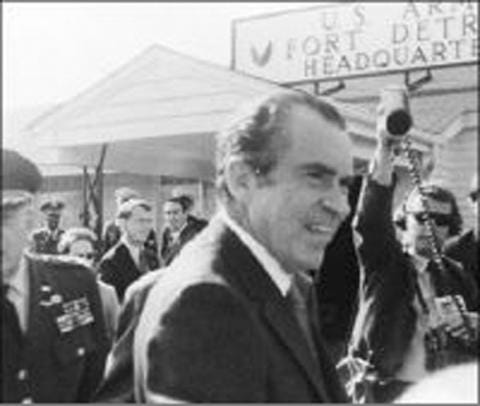
December 23, 1971: NIH: National Cancer Act is signed into law by President Nixon. Text of Act is below. Richard Nixon: “The National Cancer Act I signed into law December 23, 1971, creates the authority for organizing an all-out attack on this dread disease. The new cancer program it creates will be directly responsive to the President’s direction”
March 2, 1972. Speech of Richard Nixon: The Congress also passed the National Cancer Act, which I proposed
last year. This action opens the way for a high-intensity effort to defeat the No. 2 killer and disabler of our time, an effort fueled by an additional $100 million in the last year. A total of $430 million is
budgeted for cancer programs in fiscal year 1973, compared to $185 million in fiscal year 1969.
April 10, 1972. United Nations: The Biological Weapons Convention (BWC) effectively prohibits the development, production, acquisition, transfer, stockpiling and use of biological and toxin weapons. It was the first multilateral disarmament treaty banning an entire category of weapons of mass destruction (WMD). ... It opened for signature on 10 April 1972 and entered into force on 26 March 1975.
1976: Herbal Secrets of the Rainforest, 2nd edition, by Leslie Taylor: Early research performed in Brazil in the early 1970s revealed that espinheira santa, as well as a few other species in the Maytenus family, contains chemical compounds that showed potent antitumor and antileukemic activities in vivo and in vitro at very low dosages. Then in an 1976 plant screening program by the National Cancer Institute, an alcohol and water extract of the leaves was documented with cytotoxicity against cancer cells at very low dosages and U.S. and European pharmaceutical companies began to show an interest in it. Two of the alkaloid chemicals, named maytansine and mayteine, were extracted and tested in cancer patients in the United States and South America in the 1970s following the NCI research. Although there were some significant regressions in ovarian carcinoma and some lymphomas with maytansine, further research was not continued due to the toxicity at the dosages used. Research with the compound mayteine revealed little to no toxicity and validated its uses in traditional medicine for various types of skin cancers. In the 1990s Japanese researchers discovered a different set of compounds (triterpene chemicals) in espinheira santa which they named cangorins (cangorin A through J). These new chemicals showed cytotoxic and/or inhibitory activity against various leukemia and cancer tumor cells and the researchers have published more than eight studies on their discovery and results.
1977. Technologies to Sustain Tropical Forest Resources (Washington, D. C.: U.S. Congress,
Office of Technology Assessment, OTA-F-214, March 1984). Some 1,400 tropical forest species are believed to have anticancer properties. The National Cancer Institute has screened about 35,000 higher plant species for activity against cancer. As of 1977, about 3,000 of these had demonstrated reproducible activity and a smaller number were appropriate for clinical trials.
1977. NCI: It was not until 1977, when NCI was able to confirm antitumor activity in the mouse melanoma B16 model, that paclitaxel, also known by its trade name, Taxol, was selected as a candidate for clinical development. ... Also during that year, Dr. Susan Horwitz, Albert Einstein College of Medicine of Yeshiva University, was given a grant by NCI to study Taxol's mechanism of action. ... Because of difficulties harvesting Taxol and because of the complexities involved in synthesizing the compound, development toward the clinic was slow. The drug, however, showed effectiveness against mammary tumors and ovarian cancer, pushing researchers to find a means of isolating large quantities for clinical use. The first company to achieve large-scale production of Taxol was Polysciences, Inc.
October 2, 1981. Alt Cancer: On October 2, 1981, the Board of Scientific Counsellors, Division of Cancer Treatment, National Cancer Institute voted to abolish the NCI research contract program dealing with the development of antitumor agents from plants. In Jim Duke's eloquent, but brief introduction to Dr. Jonathan Hartwell's book, Plants Used Against Cancer: A Survey he makes the simple observation: "I fear this signals the end of significant government-sponsored research in the United States on medicinal plants, leaving research to the pharmaceutical firms, who have shown relative disinterest in plant products."
January, 1982. Alt Cancer: Plants Used Against Cancer was published in hardbound in 1982 by Quarterman Publications, Inc. (last address of record: 5 South Union Street, Lawrence, Massachusetts 01843). We went to great lengths to contact any remnants of Quarterman in early 1993 -- to no avail. Their last phone number was (508) 689-0207, and the offices were in a structure known as the "Ere Mill Building." We could find no one who would admit knowing anything about the company in Lawrence. For the record, the book copyright page reads, "This work is a facsimile compilation of the serialization entitled, "Plants Used Against Cancer. A Survey" by Jonathan L. Hartwell which appeared in Lloydia in eleven installments between 1967 and 1971. The original text has been reproduced chronologically with the pages renumbered consecutively. A forward has been added to this edition." [by Jim Duke, dated January, 1982] Plants Used Against Cancer was part of a two volume "Bioactive Plants" series published by Quarterman.
1984: NCI: In 1984, NCI began phase I clinical trials of Taxol against a number of cancer types.
1989: NCI: Demand for Taxol spiked in 1989 after investigators at Johns Hopkins reported that the drug produced partial or complete responses in 30% of patients with advanced ovarian cancer.
December 28, 1992: NIH: Taxol (paclitaxel), an anticancer drug extracted from the bark of the Pacific yew, received approval by the U.S. Food and Drug Administration (FDA) for the treatment of ovarian cancer that was not responsive to other therapy. NCI spearheaded the development of the drug through collaboration with the USDA's Forest Service, the Department of the Interior's Bureau of Land Management, and Bristol-Myers Squibb Company. This collaboration was made possible by the Federal Technology Transfer Act of 1986.
September 30, 1995. NY Times. The Office of Technology Assessment is defunded.

2019. NCI: Total funding for the NCI in 2019 was about $6 Billion.
Charles Wright

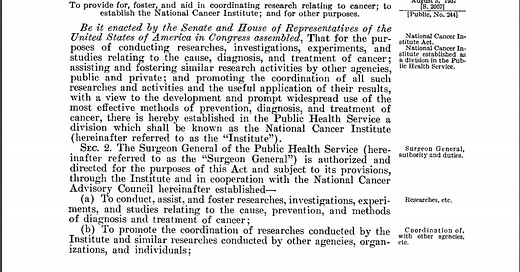



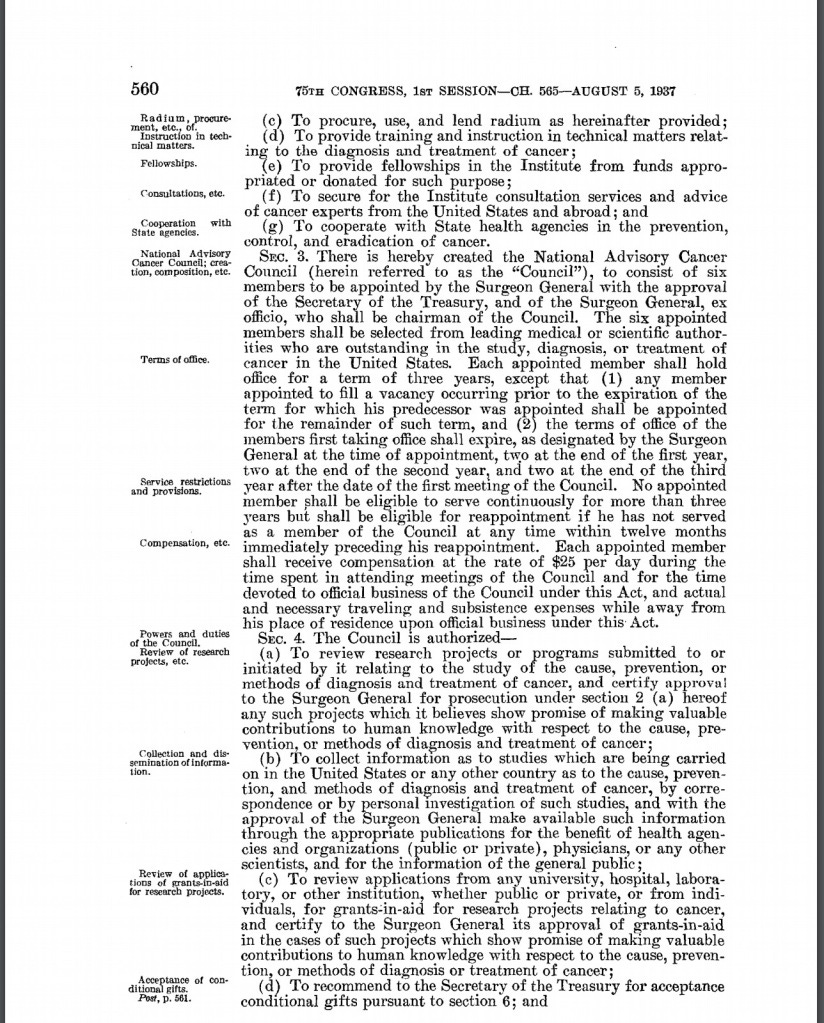
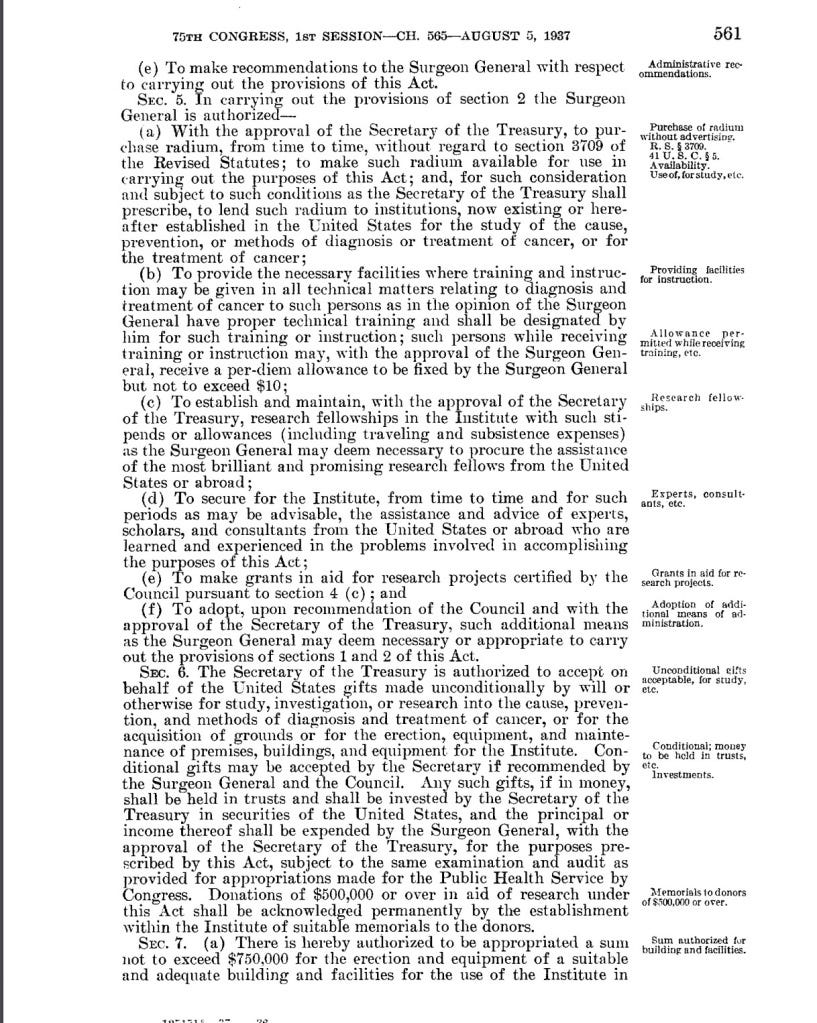
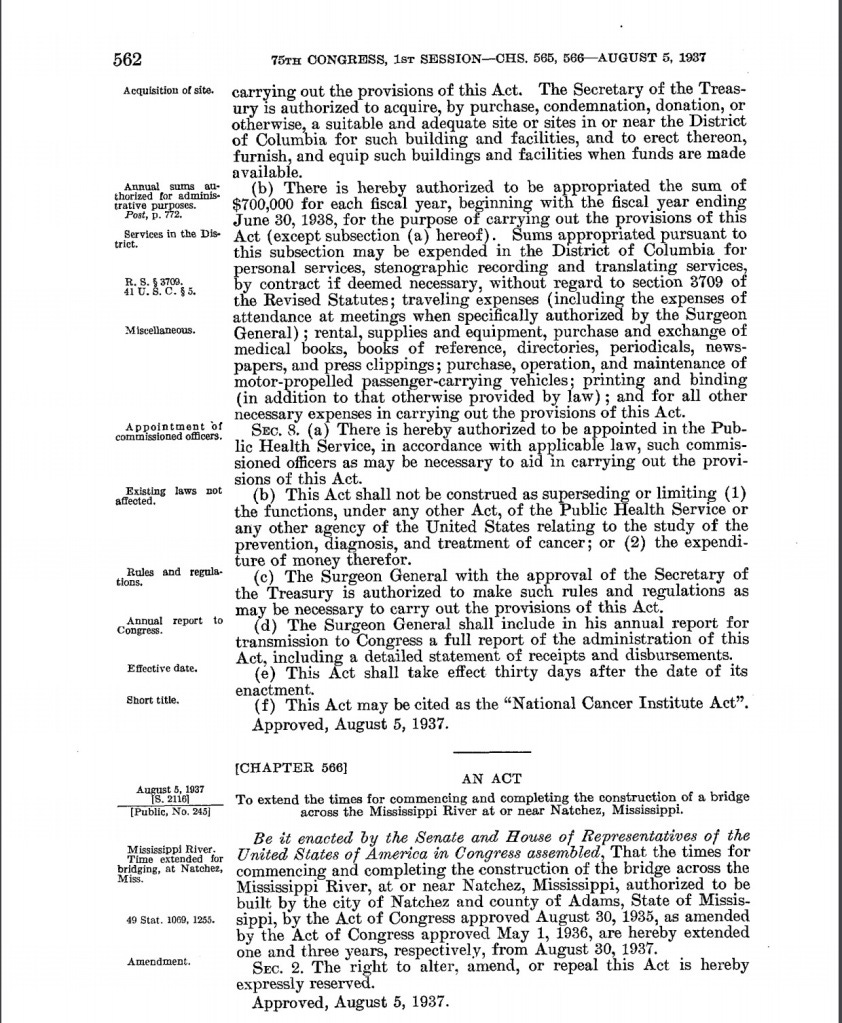
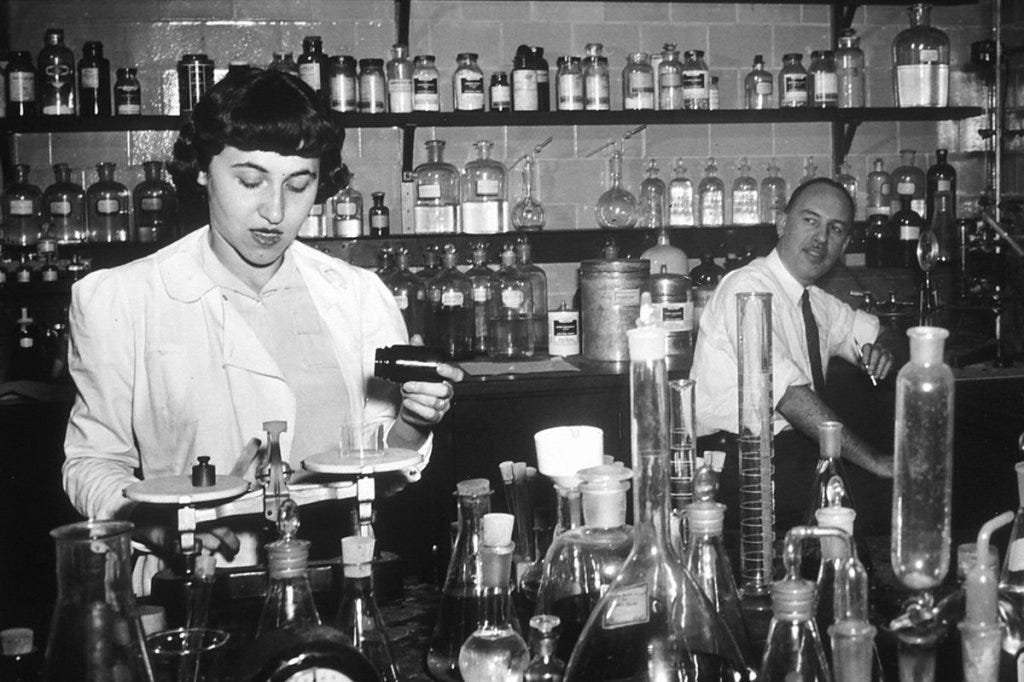


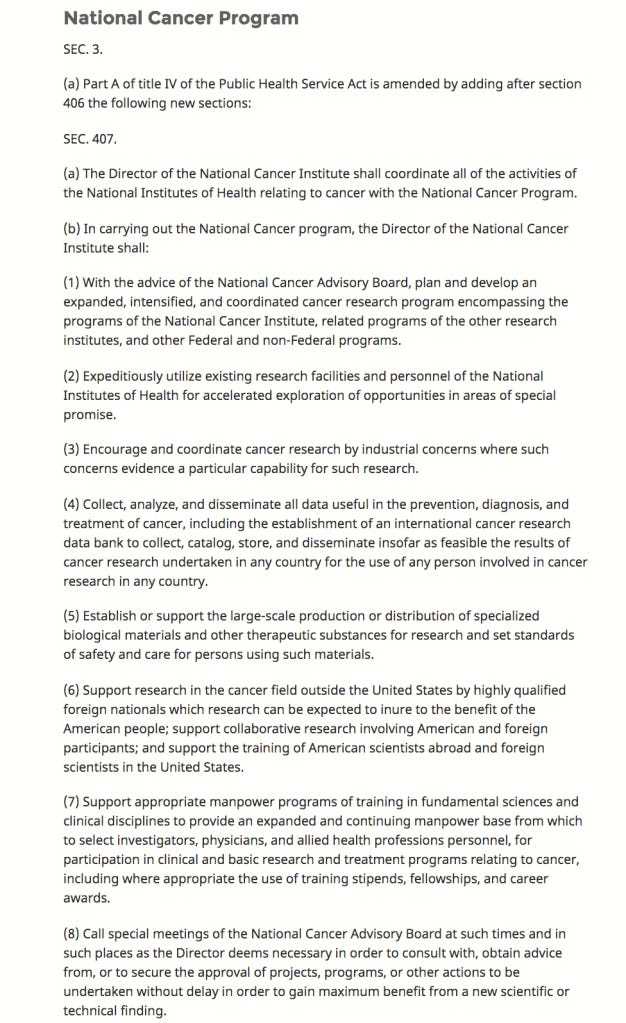









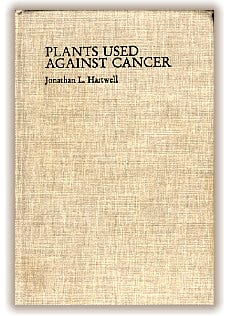
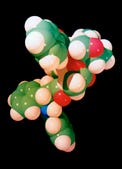
Great article!
Well done sir❣️
Thank you for posting this article as it is needed ❤️
The following link has loads of plant medicine that are good against cancer.
Herbs for cancer treatment: https://herbpathy.com/Herbal-Treatment-for-Cancer-Cid39